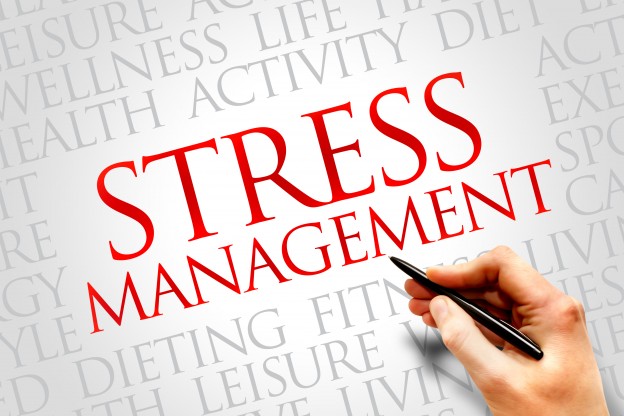Restorative Yoga is focused around the “ahhh” experience in yoga; the space found by breathing, relaxing and letting go of the mind’s internal dialogue. This gentle approach to practice allows participants to experience the same benefits of traditional practice while exerting little or no effort at all and leaves students feeling nourished, refreshed and well rested.
Prolonged stress, internal conflict, demanding situations, anxiety and anger engage the body’s natural “fight or flight” response which triggers the hypothalamus and initiates a sequence of nerve cell firing that prepares our bodies to react to perceived danger. Restorative Yoga engages our bodies’ innate ability to renew and restore, balancing and counteracting the effects of prolonged stress.
Restorative Yoga facilitates the four conditions for relaxation: relaxing the muscles with support, quieting the responses caused by stress, quieting the mind and finding a relaxed smooth breath. Unlike sleep where your mind and body are preoccupied with dreaming and tensing muscles, Restorative Yoga provides an opportunity to achieve all four of these conditions.
The purpose of Restorative Yoga is two-fold. Restorative Active Poses awaken dull areas in the body to improve circulation and promote healing while Restorative Passive Poses induce deep relaxation and recuperation.
Some of the key adjustments to look for include maintaining round and soft lines in the body and avoiding sharp angles, readjusting props strategically to support the body, filling the space between the body and the earth and using enough props to create an even path for energy. Most of the adjustments in Restorative Yoga involve accommodating and giving support to the body with props. The basic props for Restorative Yoga are blocks, chairs, straps, bolsters and eye wraps.
Breathing during Restorative Yoga should always be easy and gentle, never forced or strained. Restorative Yoga encourages students to become aware of the sensations and feelings of breathing and provides a chance to experience breath without muscular effort that brings about opening, healing and a calm state of mind. Sometimes students will access deep feelings locked in the mind/body and may experience catharsis.
Experience Restorative Yoga’s benefits to the mind and body with this balancing and rejuvenating routine.
Begin on your back with knees bent and the hands on the midsection.
Centering Breath, which consists of two gentle breaths, followed by one deliberately slow and thin inhalation and one deliberately long and full exhalation.
Bridge Flow with Block: Come to bridge pose, with the support of a block underneath the tailbone/lower lumbar spine. Lift and lower hips, elevating when the lower hips are supported.
Abs with Block or Ball: Placing the block or ball between the thighs, 2-3 inches above the knees, engaging in abdominal work of you choice, which can include crunches or leg lifts, gently applying pressure to the block or ball.
Supported Bridge with Block: Placing a block or bolster beneath the feet and lowering back, relaxing the head down onto a blanket, opening the arms to either side.
Knees to Chest: Lying down on the back, bringing the knees to the chest and holding on to the back of the thighs.
Childs Pose Restorative with Bolster: Beginning on all fours, pushing the buttocks back on to the knees and lowering the upper body down. Chest rests on a bolster, completely relaxing, resting and breathing.
Cat/Cow with Block or Ball: Beginning on all fours, holding a block or ball between the thighs, 2-3 inches above the knees, for Cat Pose, rounding the back to the sky as the head lowers, and for Cow Pose, arching the back and lifting the chin.
Down Dog with Block: Coming to Down Dog, resting the forehead on a block or holding a block or ball between the thighs.
Crocodile / Plank Pose- Upper Body Warm Ups: For Plank, beginning in Downward Facing Dog and shifting forward until the shoulder are directly above the wrists. Pressing the heels back and reaching through the crown of the head with the back straight and abdominals firm, moving to Crocodile Pose, pushing forward with your toes and hugging your ribcage below the elbows. Lowering your chest, keeping your abdominals strong and hips stationary. Transitioning from Plank to Crocodile with Child’s Pose in-between.
Side Angle with Block: From a Warrior stance, bending your front knee and placing your forearm on a block on your thigh, reaching the top arm to the sky and alternating sides.
Sunflowers: Stepping back to face the long edge of your mat, feet spread, turning the heals in and toes out, coming down to a squat while bending the elbows and placing them next to the waist, knees straight out over the toes. On an inhale, moving the arms overhead and on an exhale hinging forward from the hips, reaching the tailbone back while maintaining a neutral spine as you sweep the arms to the floor. Flowing with the breath through repetitions.
For more information about Restorative Yoga, register for YogaFit’s Restorative Yoga training at yogafit.com.








